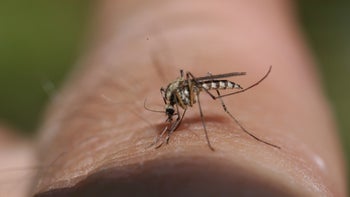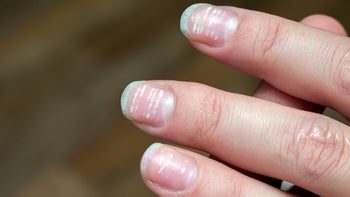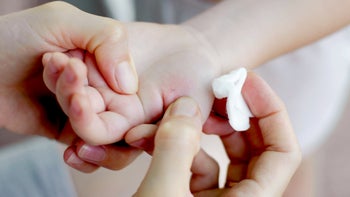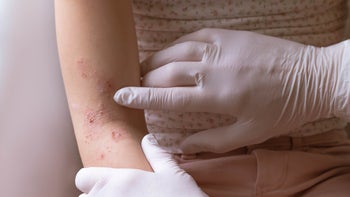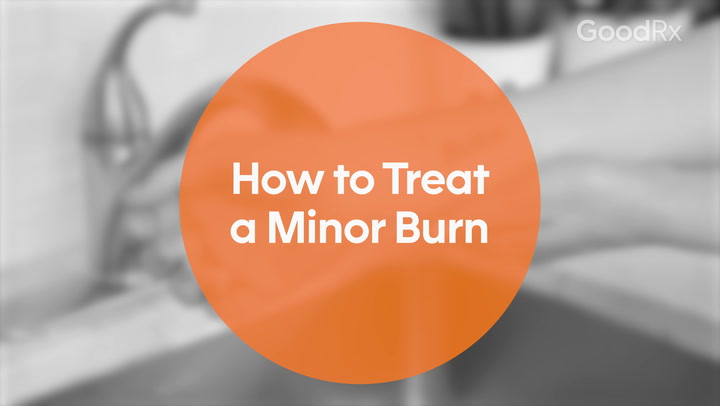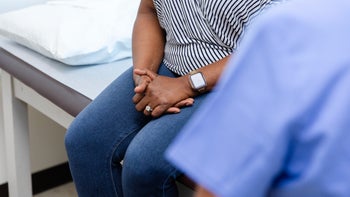
Pictures of Warts: Here’s What Different Types of Warts Look Like (and How to Treat Them)
Key takeaways:
Warts are common skin growths caused by a virus. They usually form rough skin bumps and are pretty easy to identify.
There are a few different types of warts: common warts, plantar warts, and flat warts. Warts can look different depending on where they are on the body.
Most warts will go away on their own over time. But, many people prefer to treat them to get rid of them faster.
Table of contents

Warts are common skin growths. They usually affect children, but people of all ages can get them. And, they can pop up anywhere on the skin. Warts are harmless and most of the time, they don’t cause many symptoms.
But, warts can have different shapes and appearances depending on where they are on the body. Sometimes they can be hard to identify. Here are pictures to help you identify warts, so you can start treating them.
What are warts?
Warts are skin growths caused by a virus called the human papillomavirus (HPV). When the virus infects the skin, it causes the top layer of skin cells to grow faster than the surrounding skin. This creates a bump.
Warts are contagious and can spread from person to person through direct contact. It’s also possible to develop a wart after touching a surface that came in contact with a person’s wart (like a towel or the floor). Some people are more likely to get warts than others, for example:
Children and teenagers
People with a weakened immune system
If you have a cut or skin damage
People who bite their nails or pick at their hangnails
Trying to get rid of warts? From duct tape to apple cider vinegar, learn which popular at-home treatments work best.
Remedies for plantar warts: Warts on the sole of your foot can be especially painful and hard to treat. Read how these people got rid of theirs.
Worried about genital warts? Learn all you need to know about this common type of wart, including how to diagnose, treat, and prevent them.
Types of warts
There are a few different types of warts. Here are some of the most common types:
Common warts (called verruca vulgaris) are raised and rough. They usually grow on the fingers and hands. You can have just one or develop several separate ones at once. They can also have tiny black or red dots, which represent small blood vessels in the wart.
Foot warts (called plantar warts) are flat and rough. They usually grow on the soles of the feet. They can cause pain with walking, depending on where they are on the foot and how big they are. They tend to grow in clusters. Like common warts, they can have tiny black or red dots where the blood vessels are.
Flat warts are flat and smooth. They are also smaller than other warts. They are common on the beard area and legs (from shaving). They tend to appear in their dozens.
No matter which type of wart you have, the color can vary depending on the person, and their underlying skin tone. Warts can be any color, from white to pink, tan, or brown.
Search and compare options
Pictures of warts
Here are some pictures of warts to help you identify the different types of warts.
Common warts (verruca vulgaris)
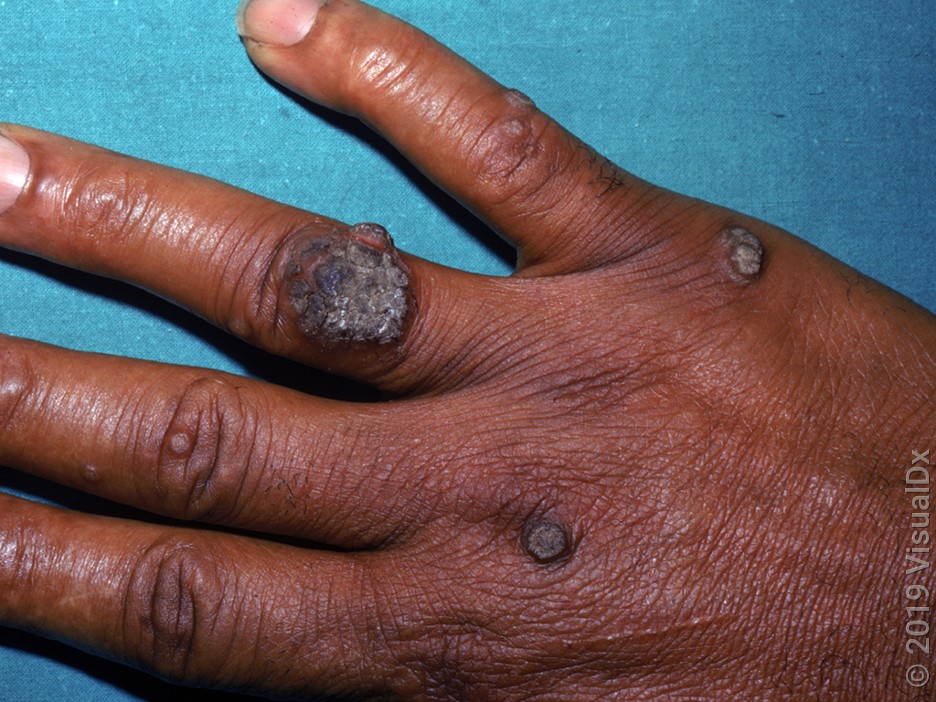

Plantar wart pictures
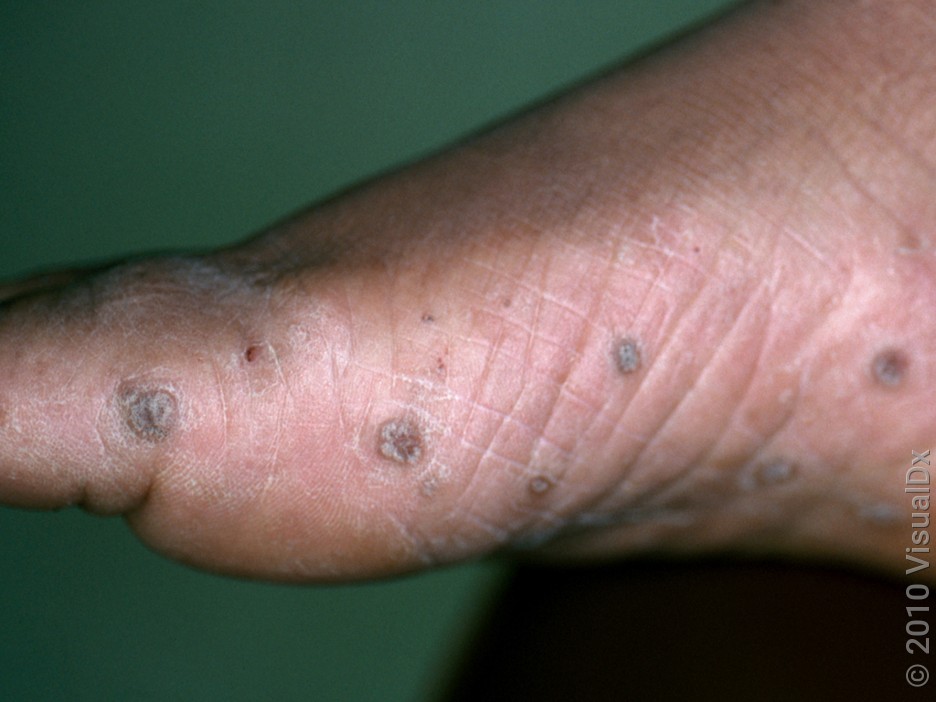

Flat wart pictures

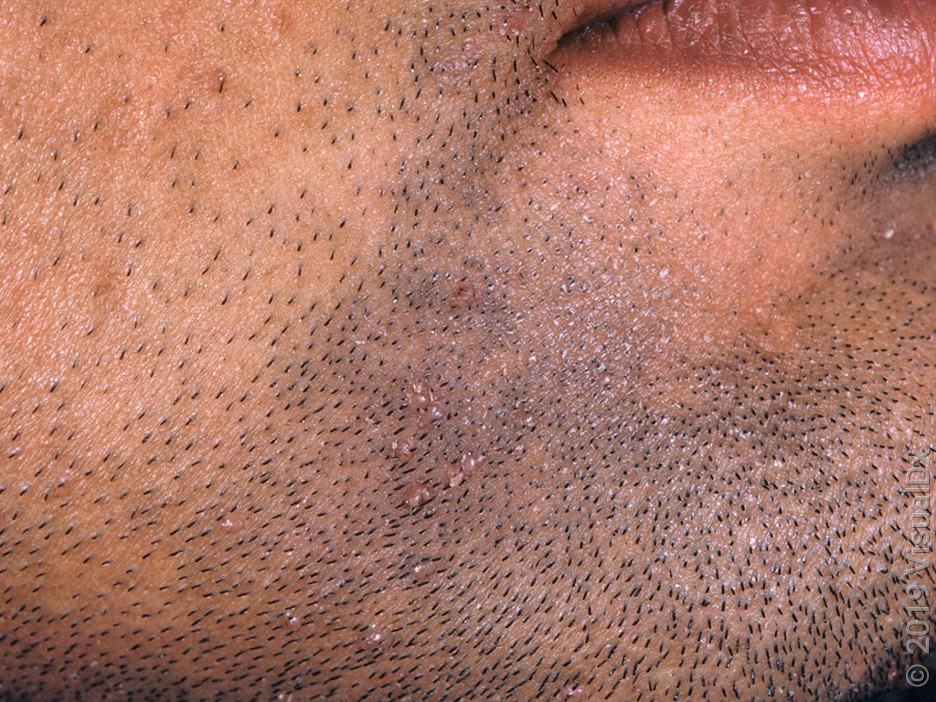
How do you treat warts?
There are many different ways to treat warts. For over-the-counter options, look for medications that contain salicylic acid. These are available in gel, liquid, and patch forms. These medications are usually applied daily for best results.
For warts that are harder to get rid of, your dermatologist may use one or more of these stronger treatments:
Cantharidin liquid, which causes a blister to form under the wart
Freezing (cryotherapy) or scraping it
Removing it with a minor surgery
Laser treatment
Immunotherapy (using a cream to cause a mild allergic reaction around the wart)
Can warts go away on their own?
Yes, warts can eventually go away on their own even without treatment. But for some people, this can take up to 2 years. Treating warts can help them go away faster, although you may still have to be patient and persevere.
Frequently asked questions
If your wart is causing significant symptoms, it may be time to get professional help. You should see a dermatologist or other medical care professional if your wart is:
Painful
Burning
Getting bigger
Not responding to treatment
Looks infected (has redness, discharge, or crusting)
Genital warts are a very common type of wart spread during skin-to-skin sexual contact. You can treat genital warts with prescription creams (like imiquimod or podofilox) that you apply yourself at home. It’s also possible to have genital warts removed by a healthcare professional in a medical office procedure. There are several different ways to remove genital warts: freezing, burning, laser, and minor surgery.
But, while treatment may remove the warts, it won’t get rid of the virus that causes them. That’s because there’s no cure for HPV infection — yet. So genital warts can (and often do) recur after treatment.
Warts are usually pretty easy to identify, but sometimes they can look similar to other skin growths, like moles or skin tags. Some types of skin cancer, like squamous cell carcinoma, can also look like warts. If you have a skin growth and you’re not sure what it is, it’s best to have it checked out by your dermatologist to get the right diagnosis.
The bottom line
Warts are common skin growths that are usually harmless. They are most common in children and teenagers, but can affect anyone at any age. There are a few different types of warts. Common warts affect the hands, plantar warts affect the feet, and flat warts affect the face or legs. Most warts go away on their own, but you may have to be patient. The best treatment for warts is salicylic acid, and this can help get rid of warts faster.
Why trust our experts?


Images used with permission from VisualDx (www.visualdx.com).
References
American Academy of Dermatology Association. (n.d.). Warts: Signs and symptoms.
American Academy of Dermatology Association. (n.d.). Warts: Who gets and causes.
American Academy of Dermatology Association. (2023). Warts: Diagnosis and treatment.



